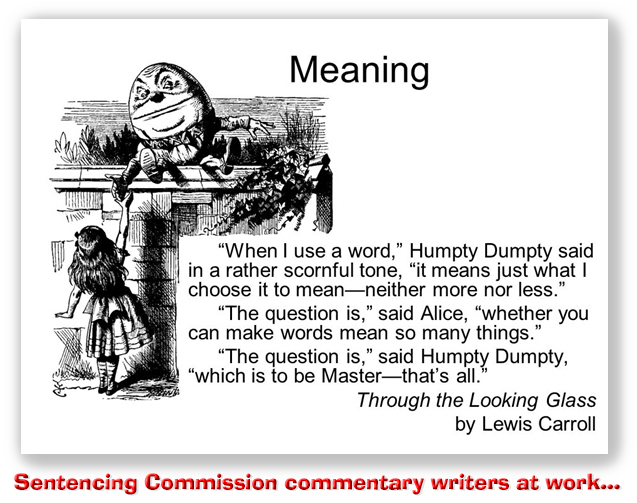We post news and comment on federal criminal justice issues, focused primarily on trial and post-conviction matters, legislative initiatives, and sentencing issues.

THANKS BUT NO THANKS
 Two federal death row prisoners, who are among the 37 inmates whose death sentences were commuted on December 23 by President Joe Biden, have filed hand-written petitions in the United States District Court for the Southern District of Indiana seeking an injunction against losing their death penalty sentences.
Two federal death row prisoners, who are among the 37 inmates whose death sentences were commuted on December 23 by President Joe Biden, have filed hand-written petitions in the United States District Court for the Southern District of Indiana seeking an injunction against losing their death penalty sentences.
NBC News reported Shannon Agofsky and Len Davis, both housed on death row at USP Terre Haute, filed on December 30, 2024, for injunctive relief to block Biden’s commutation of their death sentences to life in prison without parole.
On December 22, 2024, the defendant became aware of the publicity stunt enacted by president Joe Biden, in which he commuted the death sentences of 37 federal prisoners the defendant was part of that group. That defendant never requested commutation the defendant never filed for commutation. The defendant does not want commutation, and refused to sign the paper offered with the commutation.
Len wrote that “there are a host of constitutional violations associated with the executive branch’s attempt to sentence petitioner Davis life sentence without his agreeing to commutation.” Len asked the court to appoint an attorney to represent him and promised to expand on his argument in future filings.
Shannon argued that “[t]o commute his sentence now, while the defendant has active litigation in court, is to strip him of the protection of heightened scrutiny. This constitutes an undue burden, and leaves the defendant in a position of fundamental unfairness, which would decimate his pending appellate procedures.”
The Supreme Court held in Caldwell v. Mississippi that the 8th Amendment imposes a heightened “need for reliability in the determination that death is the appropriate punishment in a specific case.”
Shannon, who maintains his innocence, argued in his petition that he doesn’t want to lose the benefit of that additional scrutiny. Davis, on the other hand, argued that the death sentence draws “attention to the overwhelming misconduct” of the Dept of Justice in his case.
 Shannon’s and Len’s likelihood of prevailing seems to be a long shot. In Biddle v. Perovich, the Supreme Court 98 years ago pretty clearly held that the president has the authority to commute a death sentence to life and “that the convict’s consent is not required.”
Shannon’s and Len’s likelihood of prevailing seems to be a long shot. In Biddle v. Perovich, the Supreme Court 98 years ago pretty clearly held that the president has the authority to commute a death sentence to life and “that the convict’s consent is not required.”
NBC quoted Daniel Kobil, a constitutional law professor at Capital University and a death penalty defense counsel, as explaining that “we impose sentences for the public welfare, the president and governors in states commute sentences for the public welfare.”
Robin Maher, executive director of the nonprofit Death Penalty Information Center, told NBC that the vast majority of inmates on federal death row were grateful for Biden’s decision, “which is constitutionally authorized and absolute.”
Writing in his Sentencing Law and Policy blog, Ohio State University law professor Doug Berman said, “[T]hese efforts to refuse a capital commutation seem likely to help ensure these defendants get more attention for their claims of innocence than many others. And I have often asserted to students in my sentencing classes that convicted murderers claiming to be wrongfully convicted on death row are likely to get more attention for their claims of innocence than convicted murderers given LWOP.“
NBC, Two death row inmates reject Biden’s commutation of their life sentences (January 6, 2025)
Emergency Petition for Injunctive Relief, Agofsky v. United States, Case No. 2:25-cv-1, Doc. 1 (December 30, 2024)
Emergency Petition for Injunctive Relief, Davis v. United States, Case No. 2:25-cv-2, Doc. 1 (December 30, 2024)
Caldwell v. Mississippi, 472 U.S. 320 (1985)
Biddle v. Perovich, 274 U.S. 480 (1927)
– Thomas L. Root






























 Jen worked in the Cleveland, Ohio, U.S. Postal Service distribution center (Motto: ‘Where
Jen worked in the Cleveland, Ohio, U.S. Postal Service distribution center (Motto: ‘Where 



 There is little doubt that this issue, and probably the whole “attempt” furball, is headed for the Supreme Court.
There is little doubt that this issue, and probably the whole “attempt” furball, is headed for the Supreme Court.